Provide A Light And Airy Environment For Cows
by | Oct 30, 2012 | News
Although good building design and ventilation are crucial for cow health and comfort, often farmers have to adapt old sheds to cope with larger herd sizes, leading to insufficient air flow and compromising productivity. Fortunately, a little attention to detail goes a long way, as one farmer in Devon has discovered.
David Snell, who milks 150 cows at Orway Porch, Cullompton, changed his buildings just over three years ago to accommodate a move to robotic milking and year-round housing. “We had to upgrade our parlour anyway, and thought that installing robots would be the right thing to do. My two sons, Mark and John, were interested in farming and we wanted to have a bit more flexibility in our working hours – installing robots enabled us to do that.”
Mr Snell bought two Delaval robotic milkers, and redesigned the housing and feeding areas to accommodate them. “We removed smaller stock holding pens, to open up two bedding areas either side of a feed passage.” They created a small collecting yard beside the robots, and screened the area with Highlight – an innovative perforated metal wall cladding – to make it airy and attractive to the cows.
“Our Delaval representative said that if the cows could see through to the rest of the barn it would be beneficial, as they wouldn’t feel so enclosed,” says Mr Snell. “The Highlight also prevents dust and straw entering the milking units from the loose housing, which we bed up daily by mechanically blowing in straw.”
The galvanised steel cladding, manufactured by United Roofing Products in Devon, features tiny holes spread across the whole area, providing a 25% void. Colour coated to give excellent light transmission and ventilation, it negates the need for roof lights, and prevents the ingress of wind and rain into the building.
As well as creating an internal wall, Mr Snell also replaced a solid metal exterior wall with Highlight, and widened the roof vent area to improve air flow through the building. “It makes it nice and airy and open – you can look out of the shed across the surrounding farmland; you almost feel like you’re standing outside.”
The high yielding cows are housed all the time, with the lower yielding group and dry cows grazed during the summer. “The low yielders will bring themselves in to be milked, and we average 2.5 milkings a day across the whole herd.”
To keep costs to a minimum, Mr Snell retained wooden space boarding on the rest of the walls, but noticed that the cows preferred to lie in the lighter areas. “It always takes a while to settle into a new routine and environment, but I’m convinced the cows benefit from being able to see between the loose housing and the robots.
“The better light and ventilation also means the house provides a much better environment for the cows. When you have straw yards a lot of heat comes out of the bedding, and if you haven’t got good ventilation you get a build up of disease problems like respiratory diseases and mastitis. The shed is completely different now – it’s so much nicer.”
And the move to robotic milking has certainly proven to be the right one, he adds. “Yields have increased from just over 6000 litres to about 9000 litres, and the cows are a lot more settled. They didn’t take long to get to know their way round, and you don’t have to herd them all the time – it’s a much better quality of life for all concerned.”

